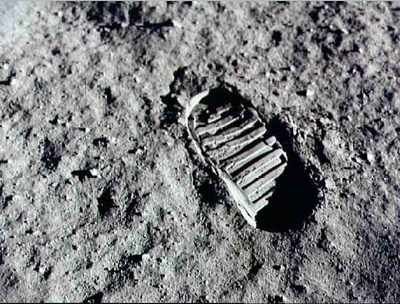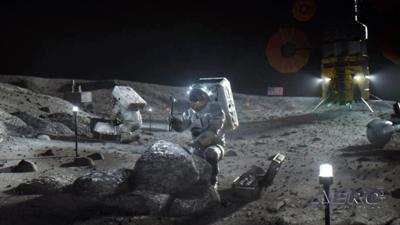Some Good News, Some Bad News
NASA has released their first major timeline update for the upcoming Artemis program, the first attempt to land astronauts on the moon. After announcing another setback in the targeted date, pushing the expected landing from the initially established 2024 to at optimistic 2025 if all goes well. Recent delays were blamed on legal wrangling with commercial industry partner Blue Origin, when they exhausted every legal avenue to thwart the Artemis program's manned lander project unless they were given a prime share of the project.

After a judge recently decided to uphold NASA's stance in relation to the lawsuit- that they have full discretion to select whomever they choose for a contract, regardless of previous non-binding statements. Blue Origin had assumed that the original plans for the lander program meant that they, along with SpaceX, would surely be the two companies selected for the project, a tantalizing job that would put their equipment front and center on the first moon mission in decades. NASA, however, awarded their favor to SpaceX, leaving Origin out in the cold. Unfortunately for them, NASA experienced a funding shortfall when congress failed to approve the budget requested, possibly illustrating shifting priorities after the administration change. For the Trump administration, a return to American astronauts on the moon was a thing of national pride and international prestige, and that competing space programs' victory would result in a major loss of face for American manufacturing, capability, and expertise.
With the Biden administration, domestic and interior considerations seem to have taken precedence in budgeting, leaving NASA to pick what they believed would be the most sure bet for the mission.

Administrator Bill Nelson laid out his plans for the near future, saying “We’re pleased with the U.S. Court of Federal Claims’ thorough evaluation of NASA’s source selection process for the human landing system (HLS), and we have already resumed conversations with SpaceX. It’s clear we’re both eager to get back to work together and establish a new timeline for our initial lunar demonstration missions.” Continuing, Nelson asserted the agency’s main task at hand. “Returning to the Moon as quickly and safely as possible is an agency priority. However, with the recent lawsuit and other factors, the first human landing under Artemis is likely no earlier than 2025.”
First, the Artemis program first has to complete the Artemis I uncrewed, then Artemis II crewed flight tests around the moon before moving onward to the crewed landing. Current development cost has reached $9.3 billion since FY2012 for the Orion spacecraft, supporting the program through 2024. Once the Artemis II portion begins, astronauts will be sent to the furthest range in history, travelling 40,000 miles past the moon before returning home. The final, manned landing will require considerable flight development and testing for each subsystem before integrating them all into one comprehensive apparatus.

Current contracts with SpaceX only cover a portion of the total flights, with future solicitations upcoming next spring for recurring human landing systems services. Nelson says the agency needs to reduce costs and streamline their operations already underway. They've requested the industry maximize efficiencies in the Space Launch System, as well as take over space suit manufacture. NASA's recent move divided the spaceflight programs into Space Operations and Exploration Systems Development in an effort to compartmentalize active, ongoing ops funding from gestating projects.
Nasa's report finishes with a statement from Deputy Administrator Pam Melroy, who said, ""What we're doing is one of the great undertakings of humanity – the scope of it from SLS to Orion to Gateway, human landing systems, ground systems, communications, spacesuits and more – it’s staggering. First at the Moon, and then at Mars. But we're NASA, and we're rising to the challenge.”
 NTSB Final Report: Rutan Long-EZ
NTSB Final Report: Rutan Long-EZ ANN FAQ: Turn On Post Notifications
ANN FAQ: Turn On Post Notifications Classic Aero-TV: ICAS Perspectives - Advice for New Air Show Performers
Classic Aero-TV: ICAS Perspectives - Advice for New Air Show Performers ANN's Daily Aero-Linx (06.28.25)
ANN's Daily Aero-Linx (06.28.25) Aero-News: Quote of the Day (06.28.25)
Aero-News: Quote of the Day (06.28.25)





